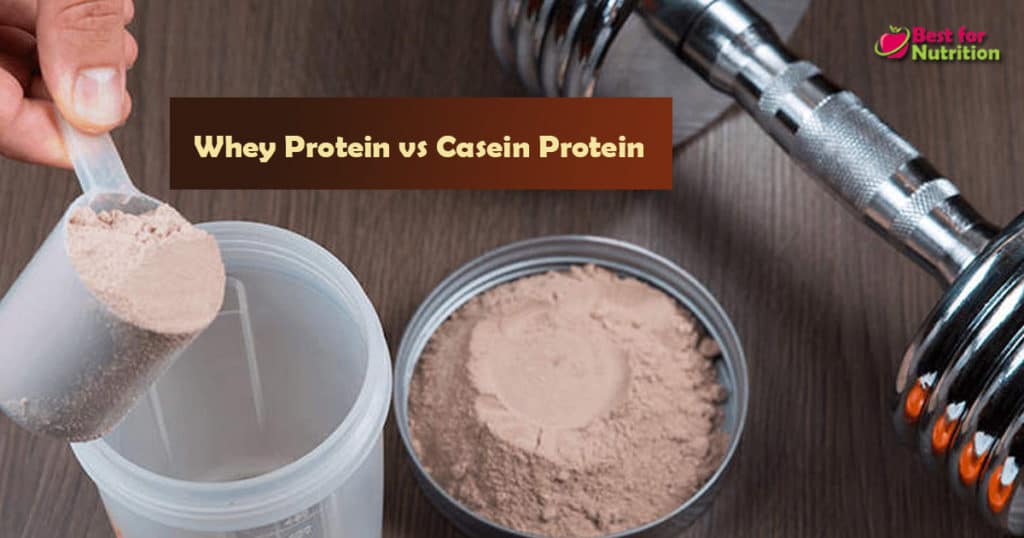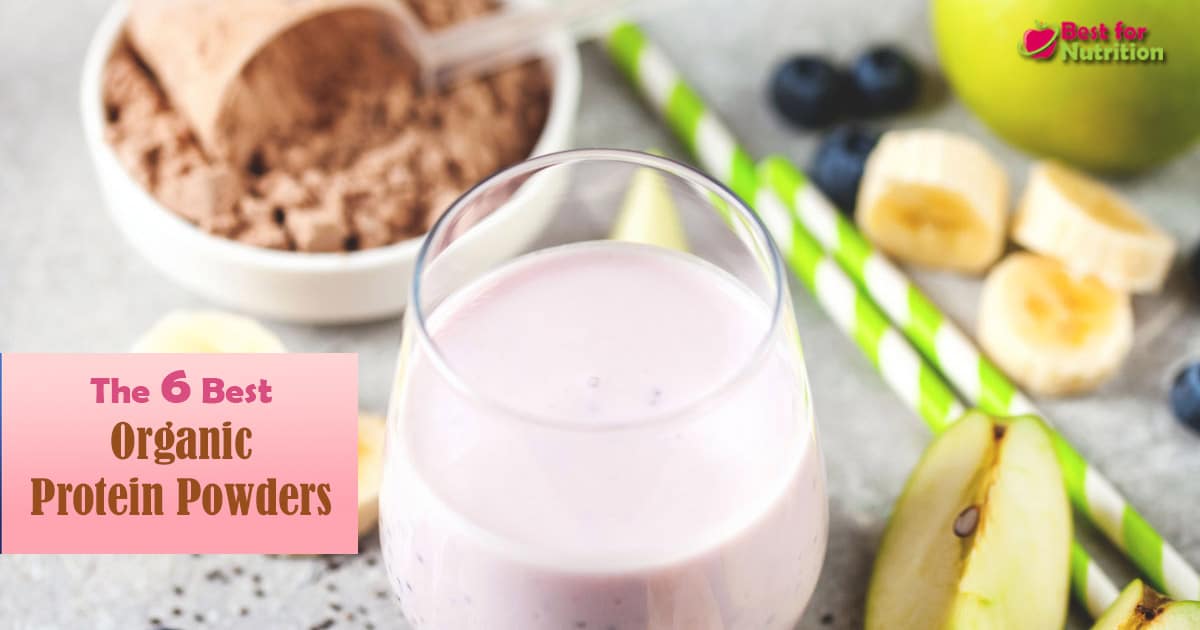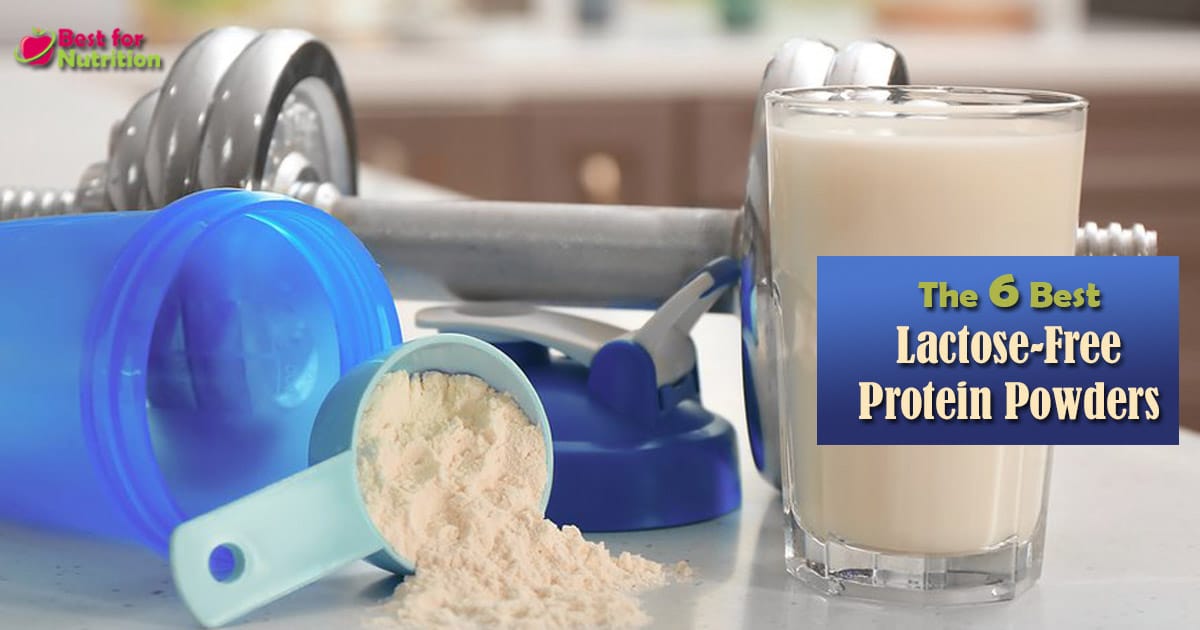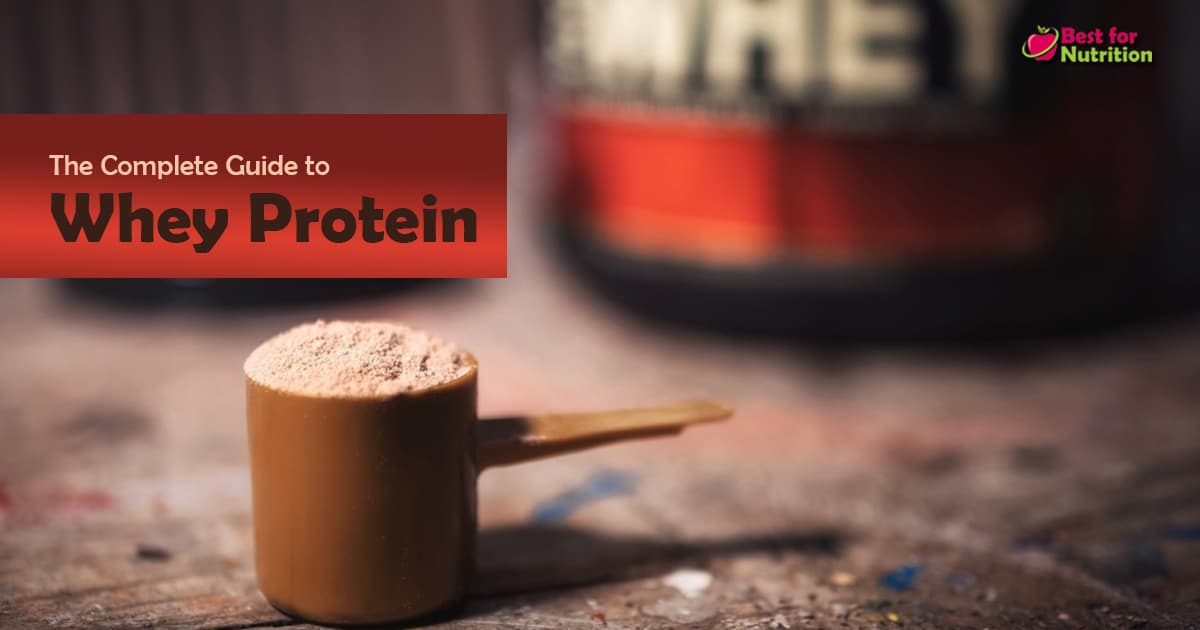Whey is the most popular and widely consumed protein powder these days. It’s quick replenishing action on the body, affordable price, and vast array of tasty flavors make it the number one choice for many fitness enthusiasts.
Casein, although deserving equal attention as whey, on the other hand, is far less popular.
Because of its slow absorbability and “time-release” action, casein has been playing at the back foot for a while now. But there may be proof that casein is actually better for your overall muscle strength and mass.
In this article, you will get to know the subtle differences between whey and casein protein, their health benefits, and ultimately which one is better suited for your fitness goal. Read on to find out!

What is Whey Protein?
Whey is the liquid part that is left behind when milk is curdled. Till recently, it was a by-product of the cheese-making industry and was discarded.
This process continued till manufacturers discovered its worth and started filtering and processing it to make whey protein powder (1).
Eventually, because of the innumerable benefits, it can bestow on our body, whey has come to be known as the king of protein supplement.
The building blocks of proteins are amino acids that the body needs for normal functioning. There are 20 such amino acids amongst which 9 amino acids can’t be made by the body and needs to be obtained from food or supplement. These amino acids are called essential amino acids.
Whey protein contains all nine essential amino acids and hence known as complete protein (2), (3).
20 percent of milk protein is whey and it is the largest natural source of branched-chain amino acids (BCAAs): leucine, isoleucine, and valine. These amino acids are shown to have the highest effectiveness in increasing muscle protein synthesis (MPS). This is especially true for leucine.
Studies report that the stimulation of skeletal muscle protein synthesis (MPS) is directly proportional to the leucine content in a meal (4).
Whey protein has a host of other health benefits such as fat loss, maintaining blood pressure, and improving cardiac health.
According to a study done in 2017 by Harvard Health on patients with slightly elevated BP, who consumed 56 grams per day of whey protein (for 8 weeks), resulted in a 3-point drop in systolic blood pressure(the number on top in a BP reading) and a 2-point drop in diastolic blood pressure (the bottom number) (5).
Summary: Whey is a high-quality protein, obtained from cow’s milk. It is the liquid that is left after milk is curdled, and is dry heated to get whey protein powder. It has a high content of BCAAs like leucine which stimulates fast muscle synthesis.
What is Casein Protein?
Casein is a slow-digesting milk protein that makes up the bulk (80%) of milk protein. Just like whey, it also contains all the nine essential amino acids required by the body. Casein has low fat and carbohydrate content.
Casein also has a high amount of leucine which initiates MPS. It contains bioactive compounds such as immunopeptides, lactoferrin, and casoplatelin that are known to have antioxidant and antifungal properties (6).
The body digests and absorbs casein much more slowly than whey, hence casein is best consumed between meals or before bedtime to prevent hunger pangs (7).
Casein releases amino acids into the bloodstream over a prolonged period and gives a small but continuous supply to the body tissues (8).
Summary: Casein is a complete dairy protein digested and absorbed by the body over several hours. It’s ideal for overnight muscle repair. It also contains many active compounds beneficial to the immune system.
Whey Protein vs Casein Protein
Though both whey and casein are both milk proteins, there are a lot of differences in the way they work. Keep reading to understand.
Source
As mentioned earlier, we derive both whey and casein protein from cow milk (9). Whey is the liquid that is left over after we have curdled milk and strained off the solid mass, which is casein protein. While 80% of milk protein is casein, 20% is whey.
Digestion and Rate of Absorption
Casein is a “time-release protein” that is digested slowly when compared to whey protein which is readily digested and absorbed by the body.
The absorption rate of casein protein is 6.1 g per hour whereas that of whey protein is 8 to 10 g per hour. Casein has shown to keep your amino acid levels elevated even after 4-5 hours of its consumption.
Surprisingly, this state stays like that for up to 7 hours or so. Whey on the other hand reaches its peak within 60-90 minutes of its intake and sustains that state for 2-3 hours.
Therefore, whey protein is best consumed within 30 mins after a workout for a quick energy boost, whereas casein protein is beneficial when taken before a fasting state such as sleep or between meals (10).
Calories
While comparing the number of calories per scoop of whey or casein protein, the difference is almost negligible.
A regular scoop (31 g) of whey protein contains about 110 calories (11). Whereas, a regular scoop of casein protein (34 g) contains about 120 calories (12).
Amino Acid Profile
Whey has a higher content of branched-chain amino acids (BCAAs).
This is a very important aspect of muscle building as one of the BCAAs, leucine, is the major player in stimulating MPS. In fact, whey contains 25 percent more leucine than casein.
On the other hand, casein contains higher levels of the amino acids histidine, methionine, and phenylalanine (13).
Nutritional Value
A standard scoop of casein protein contains almost 4 times the amount of iron and 6 times the amount of calcium present in whey protein.
Whey protein contains a type of active proteins called immunoglobulins that strengthen the immune system. These immunoglobulins have antibacterial properties that can help protect the body from microbial attacks (14).
The immunoglobulins present in whey protein hydrolysates also facilitate iron absorption and can be taken safely for iron supplementation. They also prevent damage to cells caused by iron overload (15).
Casein peptides behave in a fashion similar to ACE (Angiotensin-converting enzyme) inhibitors. ACE inhibitors are drugs that are given for high blood pressure control (16).
A crossover study confirmed the blood pressure control activity of casein protein by giving a single dose of casein hydrolysate to ten hypertensive patients (17).
Taste & Consistency
Whey usually has a better taste than casein. It’s available in a variety of delicious flavors such as chocolate, banana, strawberry, and choco-chip.
Both give great consistency with water or skim milk, but whey may have better consistency upon mixing. Using regular milk with both types of protein powders may make your protein shake much thicker.
You can also include a scoop of whey or casein protein in your oatmeal, pancakes, peanut butter or even low-calorie high protein baked goodies.
Price
Casein protein powders are generally more expensive when compared to whey protein powders.
Additives
Some brands of both whey and casein protein may add unnecessary additives and sugars which increases the caloric value of the protein powders without added benefit. So always buy protein from trusted sources and check the ingredient labels before getting them.
Muscle building
While the higher content of leucine in whey protein helps in kick-starting muscle protein synthesis (MPS), there is no clear evidence to suggest whether this results in more muscle gains long term (18).
Although whey protein is argued to be better for muscle recovery, research shows that slowly digested protein (casein) results in higher protein gain and potentially greater buildup of muscle mass long term, than rapidly digested protein (19).
Whey protein increases amino acid utilization leading to higher muscle synthesis. Whey also inhibits muscle breakdown, which works very well in maintaining muscle mass.
However, casein protein along with increasing amino acid oxidation and muscle synthesis also prevents the breakdown of muscle after a heavy workout or strenuous activity (20).
Weight loss
Casein protein may be handier when targeting fat loss, compared to whey since its prolonged release properties help in controlling hunger pangs.
It was shown that the satiety value of casein was higher in the long term whereas the satiety value of whey was higher in the short term. This means that if you’re looking for a quick fix after a heavy workout, whey will help you feel full quicker.
But if you want to feel full over an extended period of time or decrease your tendency to overeat between meals, casein should be your go-to fix (21).
Summary: Whey is absorbed by the body within 60-90 mins, while casein is absorbed over 4-5 hours. Both help in strengthening the immune system. Whey kickstarts the muscle-building process and is beneficial for short-term muscle gain whereas casein results in more muscle gains in the long term.
Whey Protein vs Casein Protein: Which one to choose?
The choice between whey or casein protein depends on your fitness goal. Both whey and casein can be taken for muscle building depending on when and how you consume them.
Whey protein should be taken immediately after a workout whereas casein protein should be taken with your meals or when going into a fasting state, such as before sleep.
If you’re looking to preserve your existing muscle mass target weight loss, perhaps casein could work much better in your favor. But it cannot replace whey protein as a post-workout supplement.
Both contain compounds that help your immune system and provide health benefits.
Comparing the variety of commercially available flavors for both whey and casein protein, whey definitely wins in taste and consistency.
Summary: Whey is supposed to be taken immediately post-workout, whereas casein is supposed to be taken with meals or before bed for overnight muscle repair. Casein prevents the breakdown of your existing muscle mass and helps the body burn fat instead of protein for energy, hence is better for weight loss. The choice depends on your needs.
Frequently Asked Questions (FAQs)
Is whey easier to digest than casein?
Yes, whey is easier to digest when compared to casein. Casein proteins form into small insoluble curds when they reach the stomach.
It takes time for the digestive enzymes to break these curds resulting in slower digestion and release of the amino acids which make up casein protein.
Whey on the other hand doesn’t have such problems and is highly accessible to the stomach enzymes. They are easily broken down and instantly absorbed.
Is it possible to take whey protein and casein protein on the same day?
It is very much possible to take both whey and casein protein on the same day. They are mutually complementary. Whey works very well during the day and can be a great post-workout supplement. Casein on the other hand can act well over a prolonged period such as night. If you want that perfect body, casein and whey taken together can be a great combination.
What helps digest casein?
Our intestines produce a digestive enzyme called dipeptidyl peptidase IV, also known as DPP-IV that can break down casein. Other than that, chymotrypsin which is a proteinase in the pancreatic juice also helps in hydrolyzing casein and makes it easy to digest. Trypsin also has shown similar effects.
The Final Note
Whey and casein are both milk proteins that have an excellent amino acid profile. When compared side by side, they do differ in terms of absorbability, taste, price, bioactive compounds, and their efficiency in MPS.
However, it doesn’t matter which protein you take: whey or casein as long as your total protein intake in a day meets your fitness requirements. You can take either of them, depending on your personal preferences or requirements. You may also take a blend of both, at their required times.
Therefore, whey and casein are both highly popular protein supplements and can support your exercise regime when taken at the right time in the right amount.





